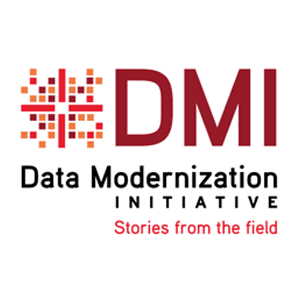Editor’s note: This blog post will also be featured on JPHMP Direct, the companion website to the Journal of Public Health Management and Practice, in our series on Innovations in Informatics.
Defining what data modernization is, what it looks like, and ultimately conveying its value can be challenging.
In her last blog post, PHII’s executive director Vivian Singletary described the importance of data modernization efforts. Not surprisingly, jurisdictions can struggle with knowing where to begin the process and how to use their funds to make the most impact.
PHII helped develop DMI Stories from the Field in collaboration with the Centers for Disease Control and Prevention’s (CDC) broader Data Modernization Initiative (DMI) efforts. We collected these innovative stories to highlight how some jurisdictions across the United States approached data modernization. We hope these in-depth perspectives and accompanying technical tools can inform similar projects across other jurisdictions. These stories can also express the scale and value of data modernization work to the public health workforce, policymakers and leaders.
CDC has funded both PHII and the Council of State and Territorial Epidemiologists (CSTE) to collect DMI Stories from the Field. We’re coordinating our storytelling efforts to provide a variety of lessons for other jurisdictions to learn from.
Here’s a sample of some of the stories we’ve collected so far:
Minnesota: using data lakes to store interconnected but separate health data sets
For years, sharing diverse kinds of public health data across the Minnesota Department of Health (MDH) involved time-consuming, manual processes. Program staff extracted data from one system and then put them on a network drive, or created a separate database for combining data.

In 2020, MDH began building data lakes for different data streams, such as COVID-19 test and case data, immunization, syndromic surveillance, and claims data. The agency built interconnected data lakes–centralized systems that store and process diverse kinds of structured and unstructured data–to give public health professionals better access to the many data sources they need.
Ohio: infant mortality project inspires cross-agency data sharing
In 2017, state leaders recognized the urgent issue of Ohio’s high infant mortality rate. They wanted to see if data science and advanced analytics could reveal the problem and provide potential interventions. This started a project that accelerated the Ohio Department of Health’s (ODH) move toward data modernization and became the basis for the InnovateOhio Platform (IOP), an enterprise-wide data platform used across Ohio’s state agencies.
With insights from IOP’s initial project, Ohio identified a public health intervention opportunity and began outreach efforts to individuals enrolled in other state programs who were eligible for the Special Supplemental Nutrition Program for Women, Infants, and Children (WIC) program. Since implementing this new effort, Ohio has seen a reduction in the state’s infant mortality rate.
With initial successes in maternal health, IOP went on to provide a foundation that could rapidly be repurposed to get information quickly to the public during the COVID-19 pandemic. The platform’s frameworks could also easily be adapted to different situations, which proved crucial to Ohio’s swift response to mpox, measles and a hepatitis outbreak in the state.

Alaska: the importance of planning and building groundwork before undertaking modernization
Alaska, a state of small population and immense size, has unique challenges around deploying statewide public health initiatives. During the pandemic, Alaska’s Division of Public Health (DPH) struggled to get comprehensive information about people who tested positive for COVID as the sheer volume of cases and lab results increased exponentially.

However, Alaska had already begun serious planning for modernizing its data systems. Guided by leadership, Alaska DPH received funding from CDC’s Data Modernization Initiative to focus on improving core data systems for public health. Around that same time, Alaska’s Department of Health–which encompasses DPH–also hired a new Chief Health Informatics Officer to serve as an executive sponsor for this work and be a strategic leader in envisioning transformation across the entire agency.
Alaska’s DPH conducted multiple surveys and interviews with partners and staff to learn its ground state and gaps for sharing and accessing data. This planning revealed that various sections within DPH had been doing several components of modernization already, but all on their own. The plan recognized these efforts and prompted thinking about how to be more strategic and how to connect and collaborate with other teams across the entire Department of Health umbrella.
More stories are coming soon! Be sure to check the DMI Stories from the Field page to see new stories as they become available.
Sarah Shaw serves as a senior informatics analyst for PHII, where she primarily focuses on projects related to supporting jurisdictions’ data modernization efforts.


